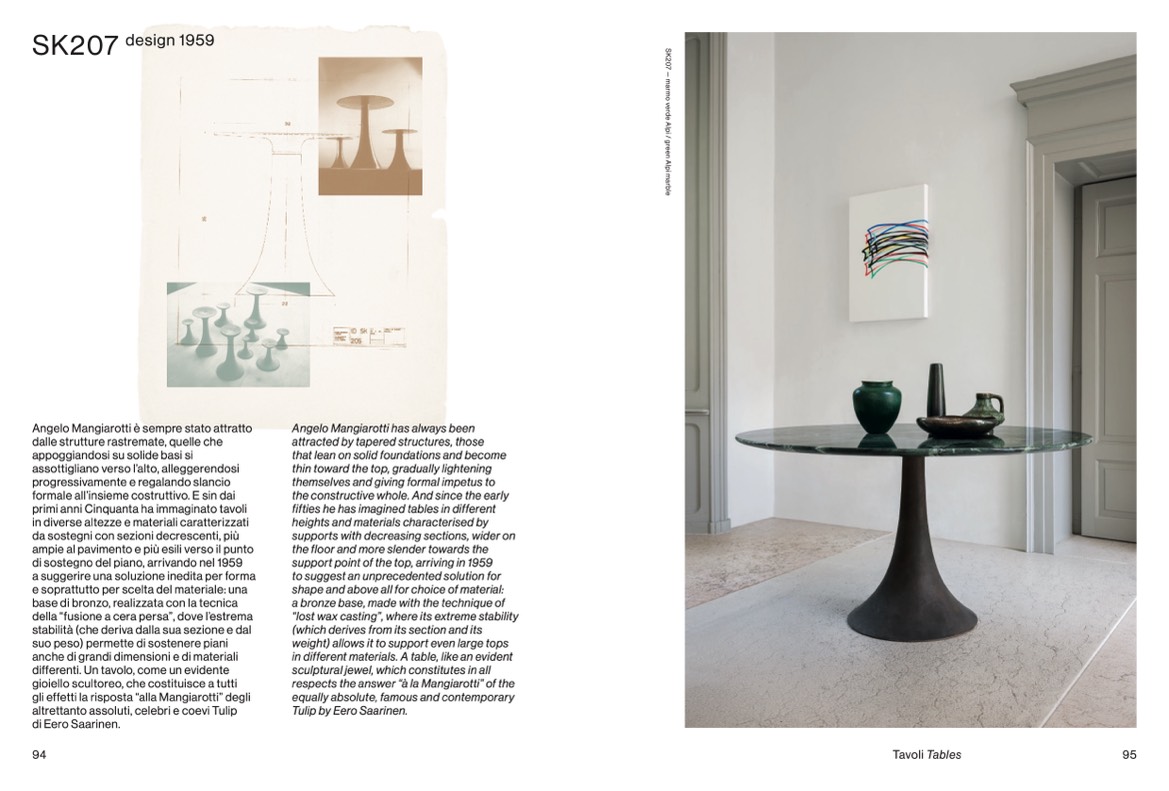
SK207
design 1959
Angelo Mangiarotti è sempre stato attratto
dalle strutture rastremate, quelle che
appoggiandosi su solide basi si
assottigliano verso l’alto, alleggerendosi
progressivamente e regalando slancio
formale all’insieme costruttivo. E sin dai
primi anni Cinquanta ha immaginato tavoli
in diverse altezze e materiali caratterizzati
da sostegni con sezioni decrescenti, più
ampie al pavimento e più esili verso il punto
di sostegno del piano, arrivando nel 1959
a suggerire una soluzione inedita per forma
e soprattutto per scelta del materiale: una
base di bronzo, realizzata con la tecnica
della “fusione a cera persa”, dove l’estrema
stabilità (che deriva dalla sua sezione e dal
suo peso) permette di sostenere piani
anche di grandi dimensioni e di materiali
differenti. Un tavolo, come un evidente
gioiello scultoreo, che costituisce a tutti
gli effetti la risposta “alla Mangiarotti” degli
altrettanto assoluti, celebri e coevi Tulip
di Eero Saarinen.
Angelo Mangiarotti has always been
attracted by tapered structures, those
that lean on solid foundations and become
thin toward the top, gradually lightening
themselves and giving formal impetus to
the constructive whole. And since the early
fifties he has imagined tables in different
heights and materials characterised by
supports with decreasing sections, wider on
the floor and more slender towards the
support point of the top, arriving in 1959
to suggest an unprecedented solution for
shape and above all for choice of material:
a bronze base, made with the technique of
“lost wax casting”, where its extreme stability
(which derives from its section and its
weight) allows it to support even large tops
in different materials. A table, like an evident
sculptural jewel, which constitutes in all
respects the answer “à la Mangiarotti” of the
equally absolute, famous and contemporary
Tulip by Eero Saarinen.
94
Tavoli Tables
95
S
K
2
0
7
—
m
a
r
m
o
v
e
r
d
e
A
l
p
i
/
g
r
e
e
n
A
l
p
i
m
a
r
b
l
e

